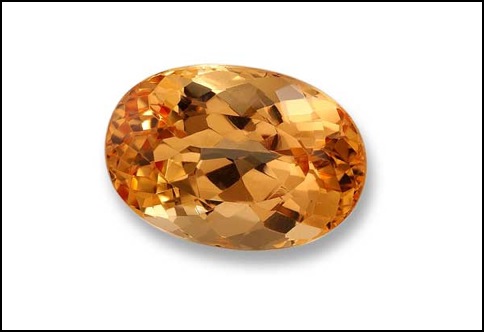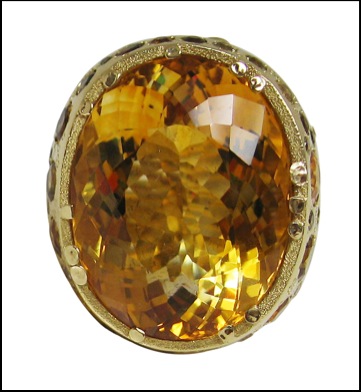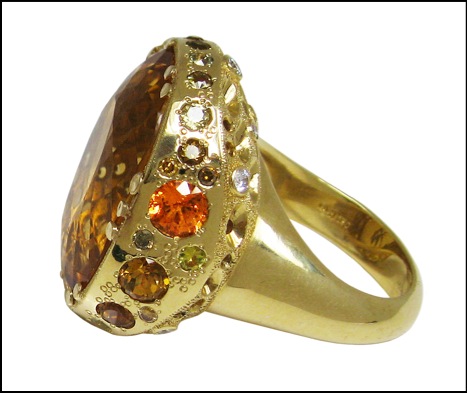Check out our Topaz and Citrine boards on Pinterest for more photos and info!

An unset Imperial Topaz, (photo courtesy AGTA).
Topaz
The birthstone for November, topaz is a talisman for the sign of Sagittarius and is the suggested gift for the 23rd anniversary. The Egyptians said that topaz was colored with the golden glow of the sun god. Legend has it that topaz dispels all enchantment and helps to improve eyesight, and the ancient Greeks believed that it had the power to increase strength and make its wearer invisible in times of emergency.
Early discoveries from Brazil in rich reddish cognac colors to vivid pinks, were used to grace the jewelry of the 18th and 19th Century Russian Czarinas, hence earning the moniker of "Imperial Topaz." Today, Topaz is found in Brazil, Mexico, Sri Lanka, Africa and China.
Topaz sometimes has the amber gold of fine cognac or the blush of a peach, and all the beautiful warm browns and oranges in between. Some rare and exceptional examples are pale pink to a sherry red.
Blue, once the most rare color of topaz, is today the most common, thanks to a stable enhancement process that turns colorless topaz blue. After the raw topaz is extracted from the earth and cut, it is irradiated to brown and then heated to sky blue. This enhancement process is permanent.


This ring by Audrius Krulis features a citrine as its center focal gemstone.
Citrine
Named from the French word for lemon, "citron" since citrine has a juicy lemon color. In ancient times, citrine was carried as a protection against snake venom and evil thoughts. Sunny and affordable, citrine can brighten almost any jewelry style, blending especially well with the yellow gleam of polished gold.
Brazil and Zambia is the primary source of this gemstone, which is a member of the quartz family. It’s color is due to the presence of iron, which is also present in amethyst, another gemstone in the quartz family.
----------
In addition to
the above information from the AGTA and other sources, you
can find facts about these of gems and more at the
"Gems
and Gem Materials"
online course,
through the University of California-Berkeley's Department
of Earth and Planetary Science. The website is available
for the general public, and contains a wealth of
information for the budding gemologist and anyone
interested in learning more about gemstones. Hanna
Cook-Wallace has contributed to this site, which was
developed by Jill Banfield while teaching at the University
of Wisconsin.